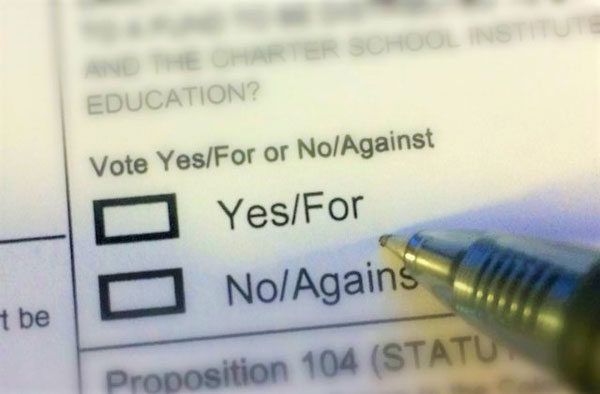Earlier this year, the Ohio Legislature passed a commonsense proposal to increase the required level of voter support to pass a constitutional amendment. During the legislative process, that effort stalled briefly, leading some commentators to accuse legislators of getting “cold feet.”
That effort made it through the legislative process and is now Issue 1 on the August 8th ballot.
The aforementioned delayed vote was followed by a paltry but angry protest at the Statehouse in which marchers carried signs that included nice-sounding but hollow slogans like “Don’t mess with Ohio voters,” and “We want our democracy back.” One sign, in particular, caught my attention. It read, “HJR1 undemocratic, unfair, unpopular, unnecessary.”
That sign got the bill number correct but everything else dead wrong.
First, increasing the threshold to approve actually strengthens democracy. By requiring 60 percent of voters to approve a change to Ohio’s fundamental law—the constitution—this resolution would allow more Ohioans to be represented in any constitutional change. In other words, a higher threshold to pass constitutional amendments gives more Ohio voters a voice in the process.
Requiring more voters to approve of major changes to our governing document is about as democratic as it gets. Far from being “undemocratic,” Issue 1 increases participation and could restore trust in democracy.
Issue 1 is also not “unfair.” In fact, it could make Ohio’s constitutional amendment process fairer because it would make it more difficult for out-of-state billionaires and dark-money groups to change Ohio’s constitution.
By taking power away from special interests and putting it back in the hands of Ohioans and their elected officials—where it belongs—the increased threshold can restore fundamental fairness and representation to Ohio governance.
Despite the cadre of far-left activists who showed up at the Statehouse to protest, the measure is quite popular with Ohio voters.
A recent survey by the Center for Excellence in Polling found that 70 percent of voters in the Buckeye State support requiring 60 percent of voters to approve an Ohio constitutional amendment. This support level marks a substantial increase in voter sentiment from a 2021 poll by the Opportunity Solutions Project that found that 55 percent of voters supported the idea.
And the measure’s popularity is not one-sided. It garners broad support from voters across the political spectrum, including from 58 percent of Independents, 64 percent of Democrats, and 85 percent of Republicans.
Finally, increasing the required level of support to amend the state constitution is necessary if Ohioans want a secure constitution. Detractors have said that the current system has worked for more than 100 years. But it’s not 1912 anymore.
As times change, so do threats, and so must security measures. In 1912, I’m sure very few Ohioans locked the door of their house at night. But now, we have advanced home security systems complete with internet-enabled cameras capable of livestreaming video directly to our smartphones. For an indicator of how much has changed since 1912, re-read that last sentence and see how much of it would have had any meaning in 1912.
If our approach to securing our homes has changed to adapt to the evolving threats over the past century, we must treat our constitution with at least as much caution.
Despite the catchy, campaign-style slogan that Issue 1 is “undemocratic, unfair, unpopular, unnecessary,” nothing could be further from the truth. This reform strengthens democracy, restores fairness to the amendment process, is widely popular with Ohio voters, and is necessary for a secure state constitution.
Increasing the threshold for passing a constitutional amendment is good policy and good politics. It improves our amendment process and is popular with voters. Ohio legislators were wise to take notice.
And here’s the kicker. Passing this resolution out of the legislature did only one thing: Gave Ohio voters the chance to consider it for themselves and vote on it. What’s more democratic than that?
Travis N. Taylor, Ph.D., is a former resident of Cincinnati and is a Visiting Fellow at the Opportunity Solutions Project.



